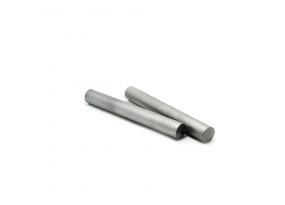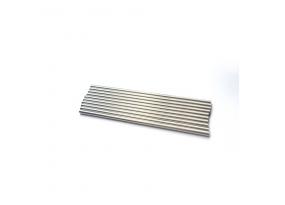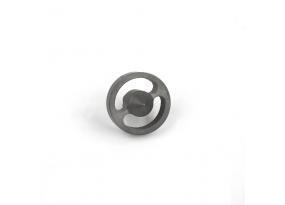High-Density Tungsten Alloy Counterweights
I. Understanding High-Density Tungsten Alloy Counterweights
From a compositional standpoint, high-density tungsten alloy counterweights are tungsten-based materials, with a tungsten content typically ranging from 85% to 99%, alloyed with small amounts of metal binders such as nickel (Ni), copper (Cu), iron (Fe), cobalt (Co), and molybdenum (Mo). They are also commonly known as high-density tungsten alloys.
Tungsten alloy counterweights possess many remarkable properties. High density is one of their most prominent features, typically reaching 16.5-19.0 g/cm³. This characteristic means that for the same required weight, high-density tungsten alloy counterweights have a much smaller volume, effectively saving space. This is crucial for ships and marine facilities where space is often at a premium.
Excellent corrosion resistance is another major advantage of tungsten alloy counterweights. In the harsh marine environment, which is rich in salt and other corrosive substances, ordinary materials are easily corroded and damaged. In contrast, tungsten alloy counterweights can resist seawater corrosion for long periods, significantly extending their service life and reducing the frequency and cost of replacement and maintenance.
Furthermore, high-density tungsten alloy counterweights are environmentally friendly. Compared to lead alloys, they are non-hazardous to the environment and human health, meeting the strict environmental standards of modern society. They also boast a series of other superior characteristics, including high tensile strength and hardness, good oxidation and heat resistance, and a low coefficient of linear expansion. All these features lay a solid foundation for their widespread application in the marine engineering and shipbuilding sectors.
II. Applications of Tungsten Alloy Counterweights in Marine Engineering
Subsea pipelines, as the "lifelines" of marine resource development, are tasked with transporting vital energy resources like oil and natural gas. However, they face numerous challenges in their complex marine environment. In shallow waters and tidal flats, where the soil is soft and currents cause significant scouring, the stability of subsea pipelines is under considerable threat. In deep-sea regions, where immense water pressure and stronger currents are present, pipelines are at risk of displacement, floating, or even fracturing due to uneven forces.
High-density tungsten alloy counterweights play a crucial role in ensuring the stability of these pipelines. By installing these counterweights on the pipelines, the weight of the pipeline is significantly increased, allowing it to be firmly "rooted" to the seabed and effectively preventing it from floating due to water currents and other forces.
As global demand for clean energy grows, offshore wind power, a key form of renewable energy, has seen rapid development in recent years. Floating offshore wind turbines are critical equipment in this field, and their stability is vital for power generation efficiency and equipment safety. The mooring system of a floating wind turbine is the key component ensuring its stability, and high-density tungsten alloy counterweights play an important part in it. Mooring lines connect the floating turbine to seabed anchors, and tungsten alloy counterweights are placed on these lines or on the seabed. They effectively limit the horizontal drift of the floating turbine, keeping it within a prescribed area. This ensures the safety of the export power cables, preventing them from being pulled or broken due to turbine drift. Furthermore, their high density, high strength, and corrosion resistance make them well-suited to the harsh weather conditions and complex environment of the open sea.
III. Applications of Tungsten Alloy Counterweights in the Shipbuilding Sector
The types of marine vessels are diverse, from recreational yachts and sailboats to special-mission submarines. They differ significantly in design, purpose, and operating environment, which leads to varying demands for counterweights.
For yachts, speed and comfort are key considerations. At high speeds, yachts are susceptible to pitching and rolling caused by wind and waves, which not only reduces passenger comfort but can also compromise navigational safety. Tungsten alloy counterweights can be used to precisely adjust the weight distribution according to the yacht's specific needs, enabling it to maintain stability at high speeds, reducing roll, and providing a more comfortable journey for passengers.
Sailboats rely primarily on wind power for propulsion, and their stability is crucial for safe navigation. In varying wind conditions, a sailboat needs to adjust its center of gravity promptly to ensure the sails can effectively capture the wind for stable sailing. High-density tungsten alloy counterweights can be flexibly adjusted in weight and position based on factors like the hull type, load, and wind conditions. This helps the sailboat maintain balance in a complex and changing marine environment, improving both safety and maneuverability.
As special vessels capable of underwater navigation, submarines have even more stringent requirements for balance and stability. Underwater, a submarine must withstand immense water pressure while maintaining excellent maneuverability to complete various missions. With their high density and strength, tungsten alloy counterweights effectively increase the submarine's mass, helping it maintain a stable attitude underwater. By precisely adjusting the position and weight of these counterweights, a submarine can achieve diving, surfacing, and smooth underwater cruising, ensuring the successful completion of its missions.
In modern port operations, ship unloaders are key equipment for enhancing the efficiency of bulk material handling. As port throughput increases, the performance requirements for ship unloaders are also rising. The counterweight system of a ship unloader directly affects its operational efficiency, stability, and energy consumption.
Traditional counterweight materials for ship unloaders, such as lead or iron blocks, have numerous drawbacks. The advent of high-density tungsten alloy counterweights has brought a revolutionary upgrade to these systems. First, their high density allows for greater mass in the same volume, effectively reducing the size of the counterweight. Second, tungsten alloy counterweights have excellent wear and corrosion resistance, allowing them to maintain their performance over long-term use in port environments and significantly extending the service life of the unloader. Finally, from an environmental perspective, tungsten alloy counterweights cause minimal pollution, aligning with the modern concept of green port development.

Carbide Rods Products
All Categories
- Ground Solid Tungsten Carbide Rods
- Unground Solid Tungsten Carbide Rods
- Tungsten Carbide Rods Single Hole
- Tungsten Carbide Rods Double Holes
- Nonstandard Tungsten Carbide Rods
- Tungsten Carbide Bars And Strips
- Tungsten Carbide Plates
- Customized Tungsten Carbide Products
- Tungsten Carbide Burr Blank
- Tungsten Weight
- Tungsten carbide rods&Custom-made Carbide rods
- Cemented Carbide Plates & Non-Standard Custom-made Carbide Plates
- Cemented Carbide Strips & Non-Standard Custom-made Carbide Strips
- Cemented Carbide Die & Non-Standard Custom-made Carbide Die
Contact Us
HAO Carbide Co., LTD.
Catherine Tang
Tel: +86-731-22199705
Fax: +86-731-28260602
Mob: +86-13975383023
Email: Catherine@haocarbide.com
Web: www.hao-carbide.com
Address: Building 3, Power Valley Industrial Park, Zhuzhou City, Hunan Province, China



